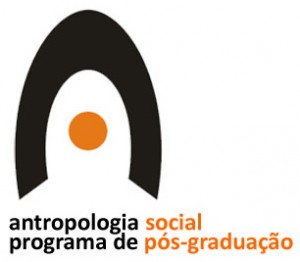Comendo animais entre os Kanamari da Amazônia ocidental
DOI:
https://doi.org/10.52426/rau.v5i1.133Palavras-chave:
Amazônia, animismo, caça, KanamariResumo
Este artigo analisa como os Kanamari, povo de língua katukina da Amazônia ocidental, se asseguram de que a carne que consomem é comida. Como é comum na Amazônia indígena,os Kanamari afirmam que, em certos contextos, os animais são pessoas, agindo como sujeito em suas relações com os humanos. Tendo em vista esta condição, o objetivo deste artigo é o de investigar como os Kanamari transformam animais que podem ser pessoas em alimento que, uma vez compartilhado entre corresidentes, cozinhado e comido, serve de suporte para criar ou reforçar laços de parentesco. O artigo privilegia os processos técnicos de caça e tratamento da carne, e do papel do sangue a da pele nas teorias nativas de animicidade.
Referências
ALBERT, Bruce. 1985. Temps du sang, temps des cendres: représentation de la maladie, système rituel et espace politique chez les Yanomami du Sud-Est (Amazonie brésilienne). Tese de Doutorado, Université de Paris X.
BASSO, Ellen. 1973. The Kalapalo Indians of Central Brazil. New York: Holt, Rinehart & Winston.
BRIGHTMAN, Marc. 2011. “Archetypal Agents of Affinity: ‘Sacred’ Musical Instruments in the Guianas?”. In: J.-P. Chaumeil & J. Hill (orgs.), Burst of breath: new research on indigenous ritual flutes in Lowland South America. Lincoln: University of Nebraska Press. pp. 201-218.
CONKLIN, Beth. 2001a. Consuming grief: compassionate cannibalism in an Amazonian society. Austin: University of Texas Press.
______. 2001b. “Women’s blood, warrior’s blood, and the conquest of vitality in Amazonia”. In: T. Gregor & D. Tuzin (orgs.), Gender in Amazonia and Melanesia: an exploration of the comparative method. Berkeley: University of California Press. pp.141-174.
COSTA, Luiz. 2007. As faces do jaguar: parentesco, história e mitologia entre os Kanamari da Amazônia Ocidental. Tese de Doutorado, Museu Nacional.
______. 2010. “The Kanamari Body-owner: predation and Feeding in Western Amazonia”. Journal de la Société des Américanistes, 96(1):169-192.
______. 2013. “Alimentação e comensalidade entre os Kanamari da Amazônia Ocidental”. Mana: Estudos de Antropologia Social, 19(3):473-504.
CROCKER, Jon. 1985. Vital souls: Bororo cosmology, natural symbolism and shamanism. Tucson: University of Arizona Press.
DESCOLA, Philippe. 1992. “Societies of nature and the nature of society”. In: A. Kuper (org.), Conceptualizing Society. London: Routledge. pp. 107-126.
______. 1994. In the society of nature: a native ecology in Amazonia. Cambridge: Cambridge University Press.
ERIKSON, Philippe. 1984. “De l’apprivoisement à l’approvisionnement: chasse, alliance et familiarization en Amazonie amérindienne”. Technique et Cultures, 9:105-140.
FAUSTO, Carlos. 2002. “Banquete de gente: comensalidade e canibalismo na Amazônia”. Mana: Estudos de Antropologia Social, 8(2):7-44.
______. 2007. “Feasting on people: eating animals and humans in Amazonia”. Current Anthropology, 48(4):497-530.
GOW, Peter. 1991. Of mixed blood: kinship and history in Peruvian Amazonia. Oxford: Oxford University Press.
______. 1997. “O parentesco como consciência humana: o caso dos Piro”. Mana: Estudos de Antropologia Social, 3(2):39-65.
______. 2007. “Clothing as acculturation in Peruvian Amazonia”. In: E. Ewart & M. O’Hanlon (orgs.), Body arts and modernity. Wantage: Sean Kingston Publishing. pp. 53-71.
HUGH-JONES, Christine. 1979. From the Milk River: spatial and temporal processes in northwest Amazonia. Cambridge: Cambridge University Press.
HUGH-JONES, Stephen. 1996. “Bonnes raisons ou mauvaise conscience? De l’ambivalence de certains Amazoniens envers la consommation de viande”. Terrains, 26:123-148.
______. 2001. “The gender of some Amazonian gifts: an experiment with an experiment”. In: T. Gregor & D. Tuzin (orgs.), Gender in Amazonia and Melanesia: an exploration of the comparative method. Berkeley: University of California Press. pp. 245-278.
LÉVI-STRAUSS, Claude. 1985. La potière jalouse. Paris: Maspero.
LIMA, Tânia Stolze. 1996. “O dois e seu múltiplo: reflexões sobre o perspectivismo em uma Cosmologia Tupi”. Mana: Estudos de Antropologia Social, 2(2):21-47.
OVERING KAPLAN, Joanna. 1975. The Piaroa: a people of the Orinoco Basin. Oxford: Clarendon Press.
RIVAL, Laura. 1996. “Blowpipes and spears: the social significance of Huaorani technological choices’. In: P. Descola & G. Pálsson (orgs.), Nature and society: anthropological perspectives. London: Routledge. pp. 145-164.
RIVIÈRE, Peter. 1969. Marriage among the Trio: a principle of social organization. Oxford: Clarendon Press.
RODGERS, David. 2013. “The filter trap: swarms, anomalies and the quasi-topology of Ikpeng shamanism”. Hau: Journal of Ethnographic Theory, 3(3):77-105.
SISKIND, Janet. 1973. To hunt in the morning. Oxford: Oxford University Press.
SURRALLÈS, Alexandre. 2003. Au cœur du sens: perception, affectivité, action chez les Candoshi. Paris: CNRS Editions.
TAYLOR, Anne Christine. 1996. “The soul’s body and its states: an Amazonian perspective on the nature of being human”. Journal of the Royal Anthropological Institute, 2:201-215.
VILAÇA, Aparecida. 2002. “Making Kin out of Others in Amazonia”. Journal of the Royal Anthropological Institute, 8:347-356.
VIVEIROS DE CASTRO, Eduardo. 1992. From the enemy’s point of view: humanity and divinity in an Amazonian society. Chicago: University of Chicago Press.
______. 1996a. “Os pronomes cosmológicos e o perspectivismo ameríndio”. Mana: Estudos de Antropologia Social, 2(2):115-144.
______. 1996b. “Le meurtrier et son double chez les Araweté (Brésil): un exemple de fusion rituelle”. Systèmes de Pensée en Afrique Noire, 14:77-104.
______. 2002. “O nativo relativo”. Mana 8(1):113-148.
______. 2009. “The gift and the given: three nano essays on kinship and magic”. In: S. Bamford & J. Leach (orgs.), Kinship and beyond: the genealogical model reconsidered. Oxford: Berghahn. pp. 237-268.
WILLERSLEV, Rane. 2007. Soul hunters: hunting, animism and personhood among the Siberian Yukaghirs. Berkeley: University of California Press.
Downloads
Publicado
Como Citar
Edição
Seção
Licença
Copyright (c) 2015 Revista de Antropologia da UFSCar

Este trabalho está licenciado sob uma licença Creative Commons Attribution-ShareAlike 4.0 International License.





